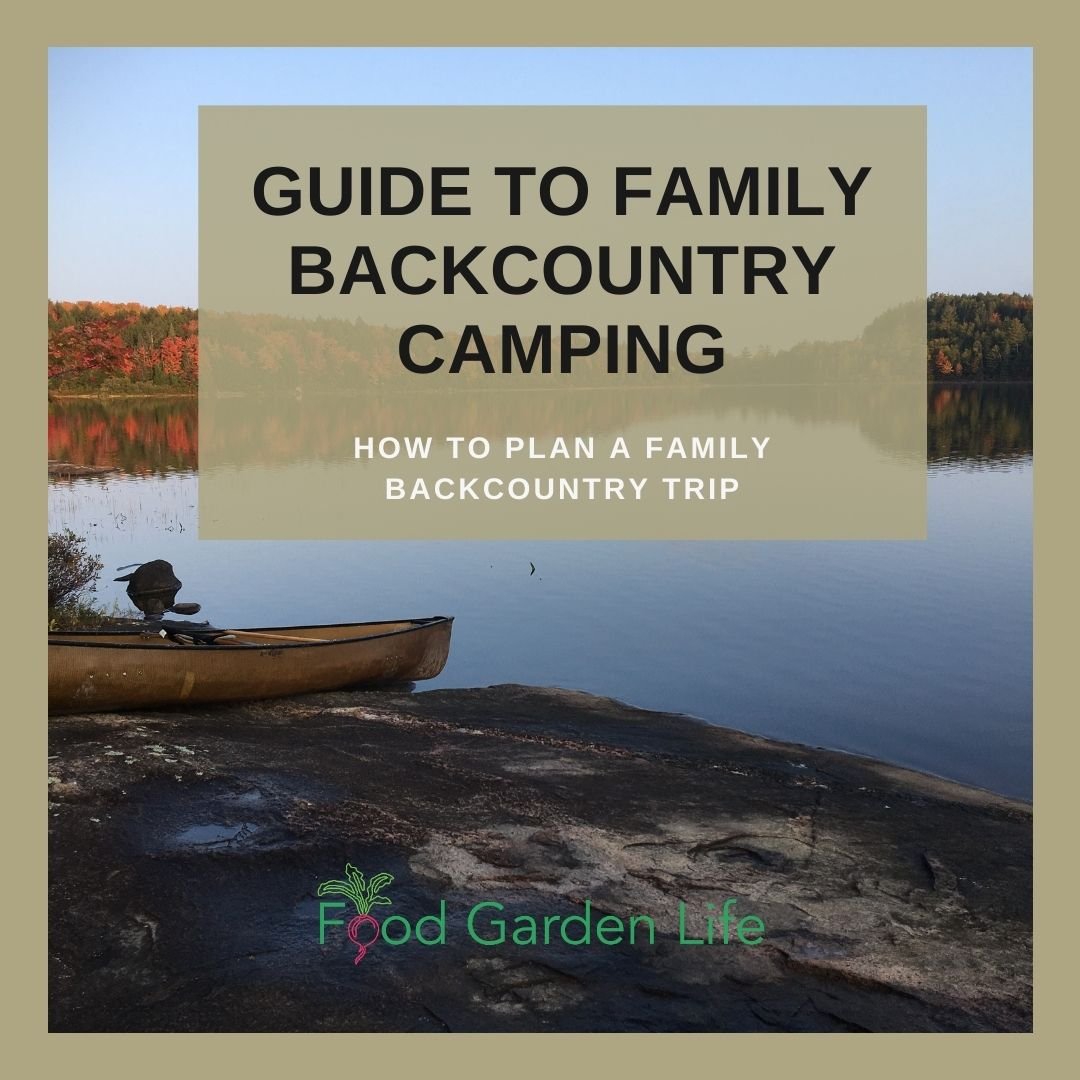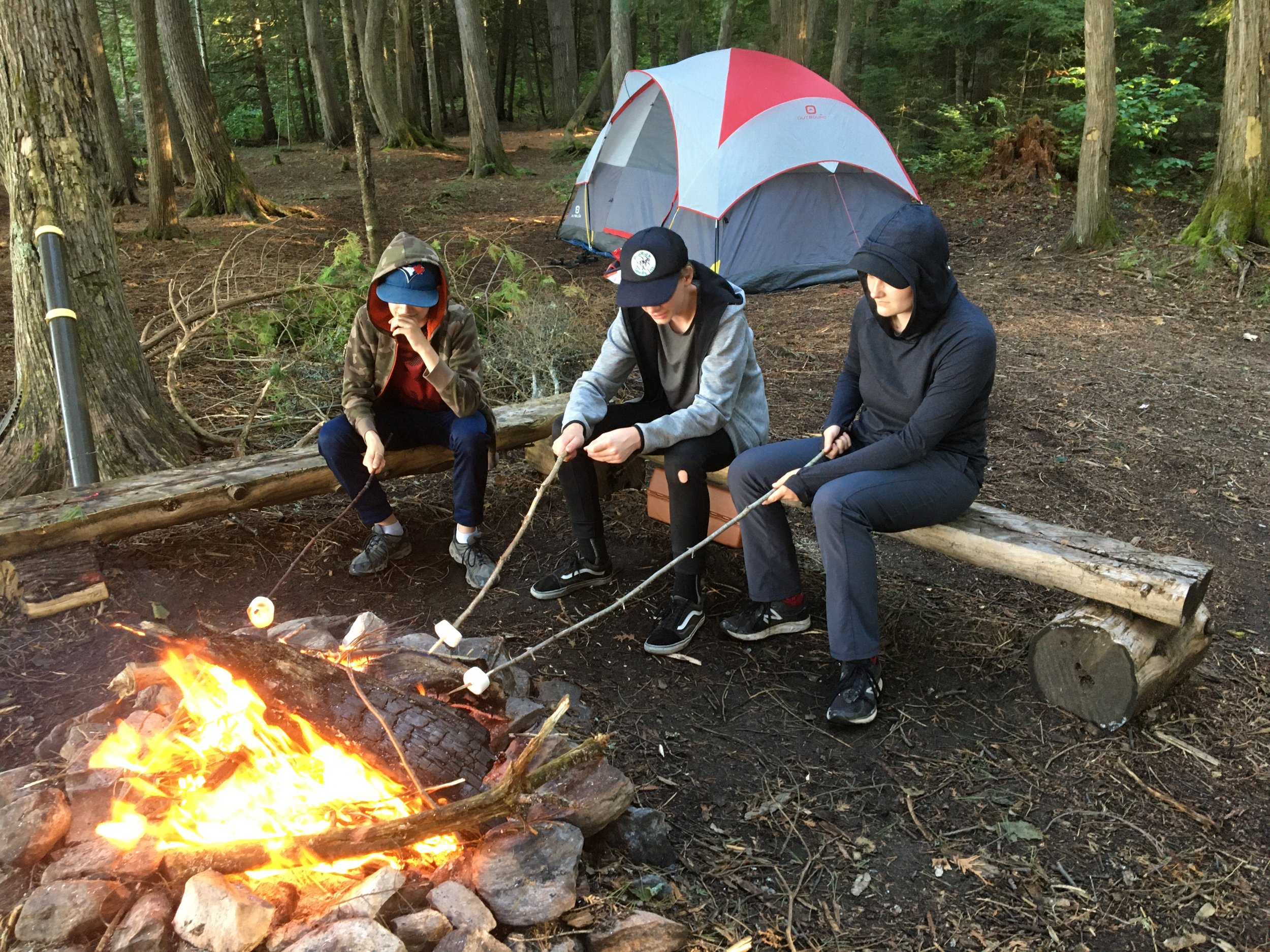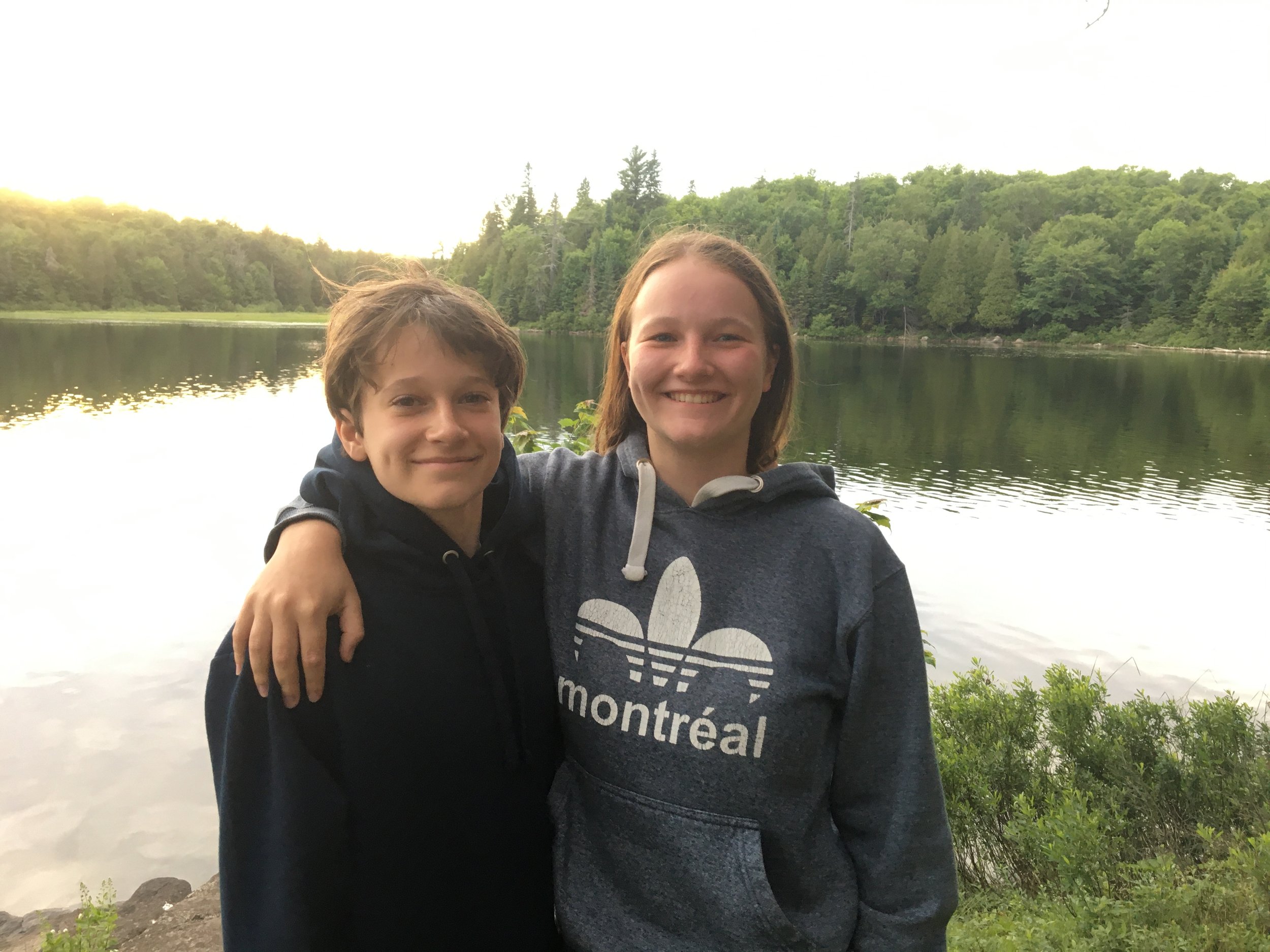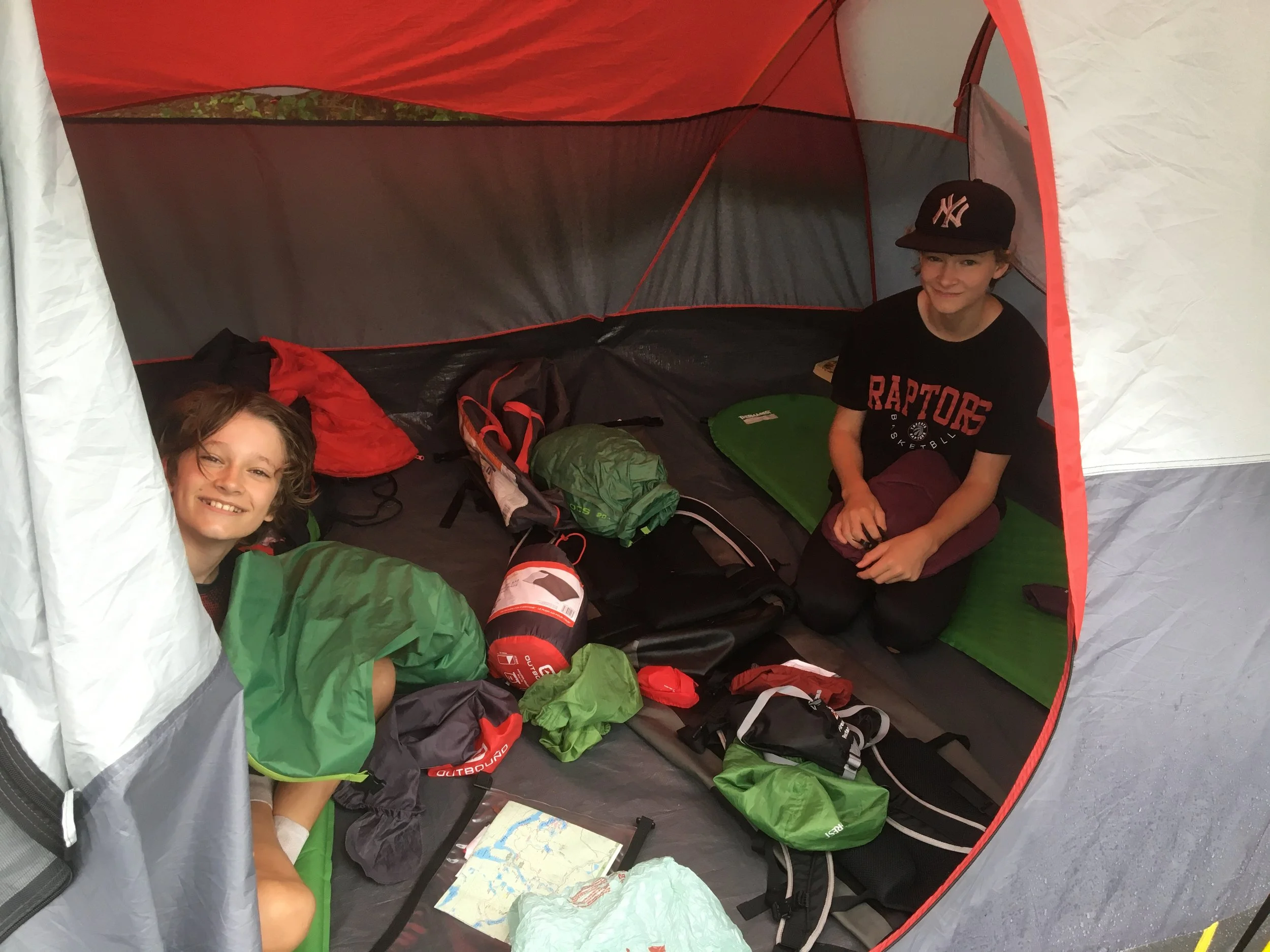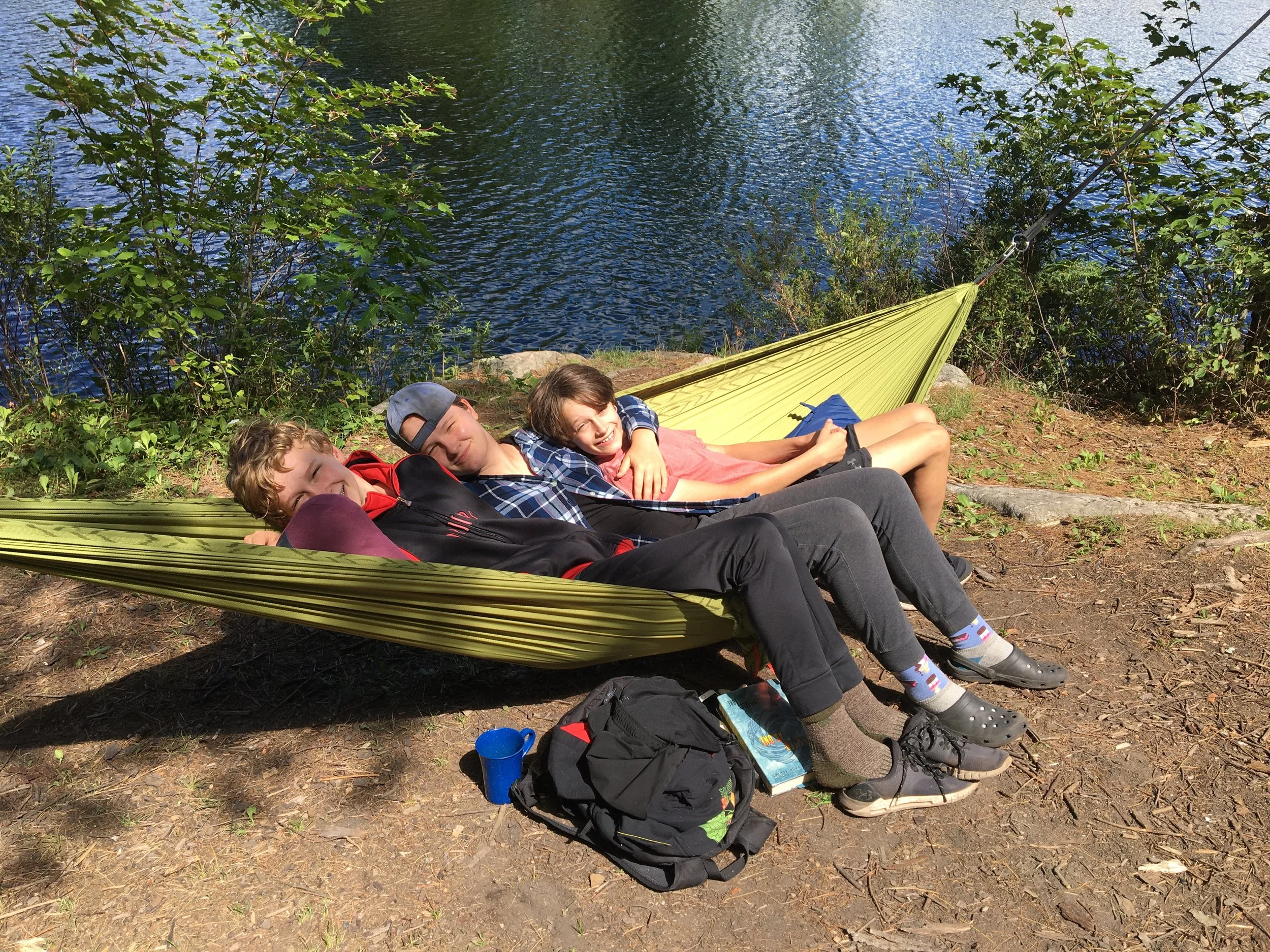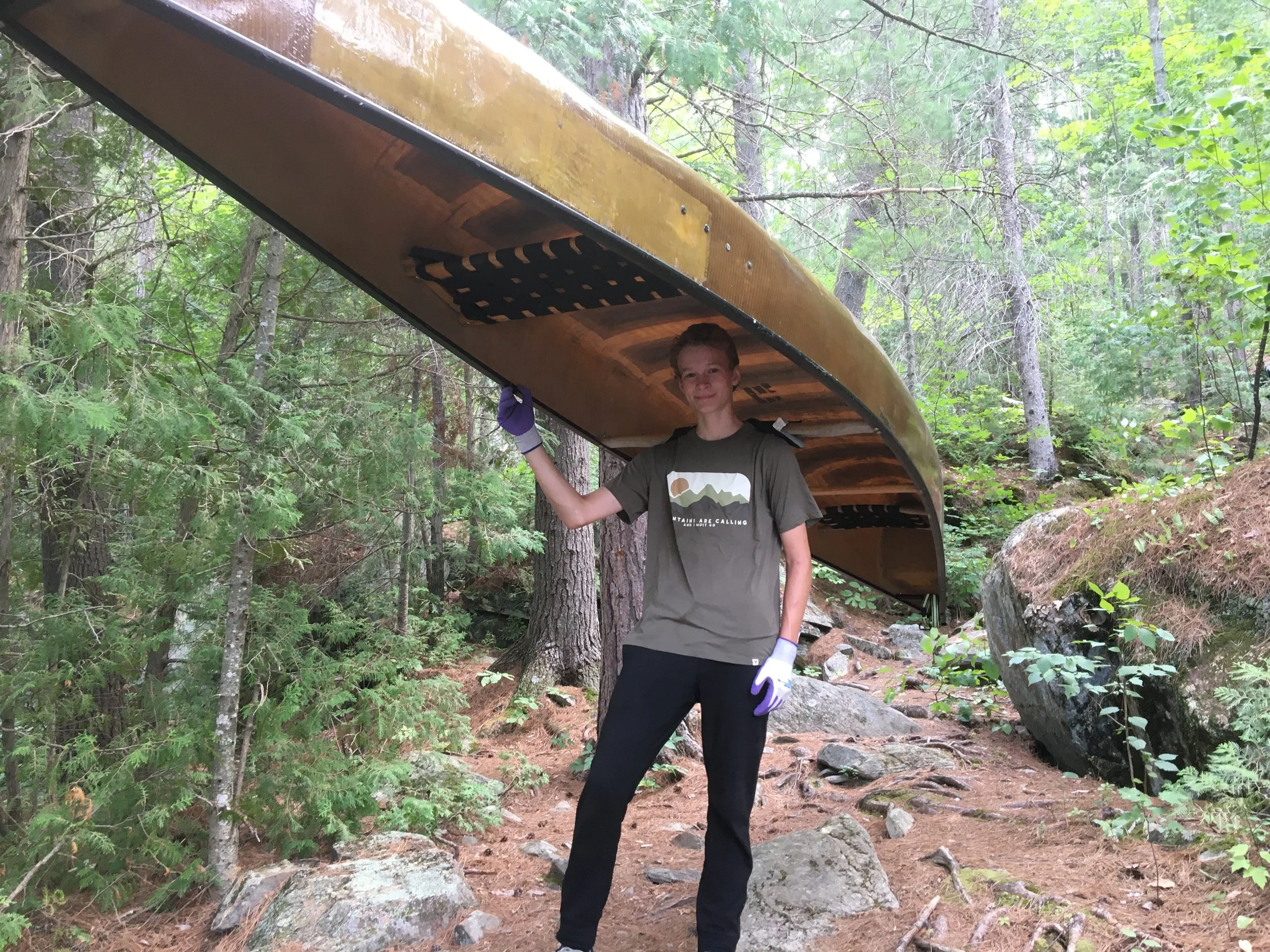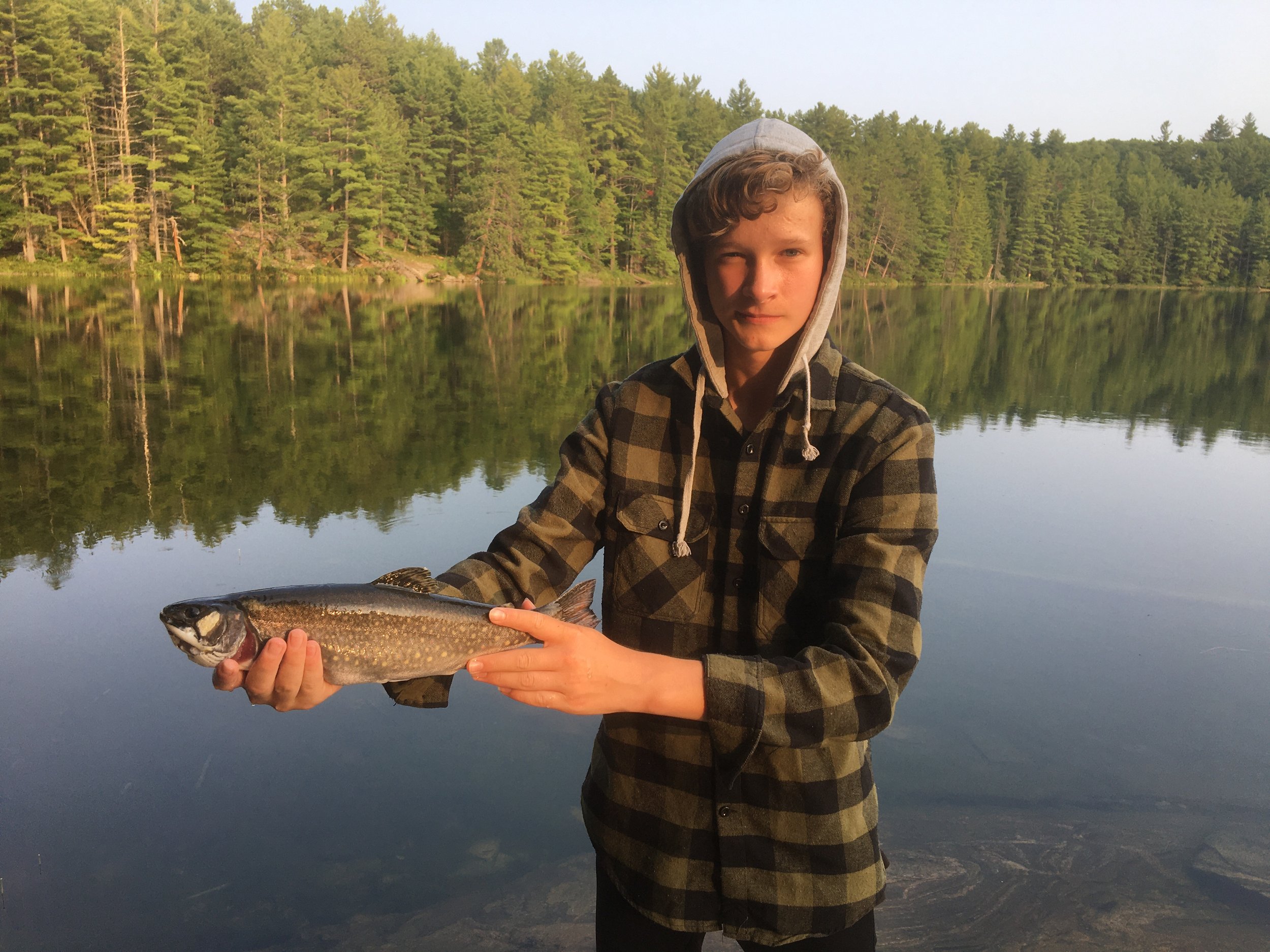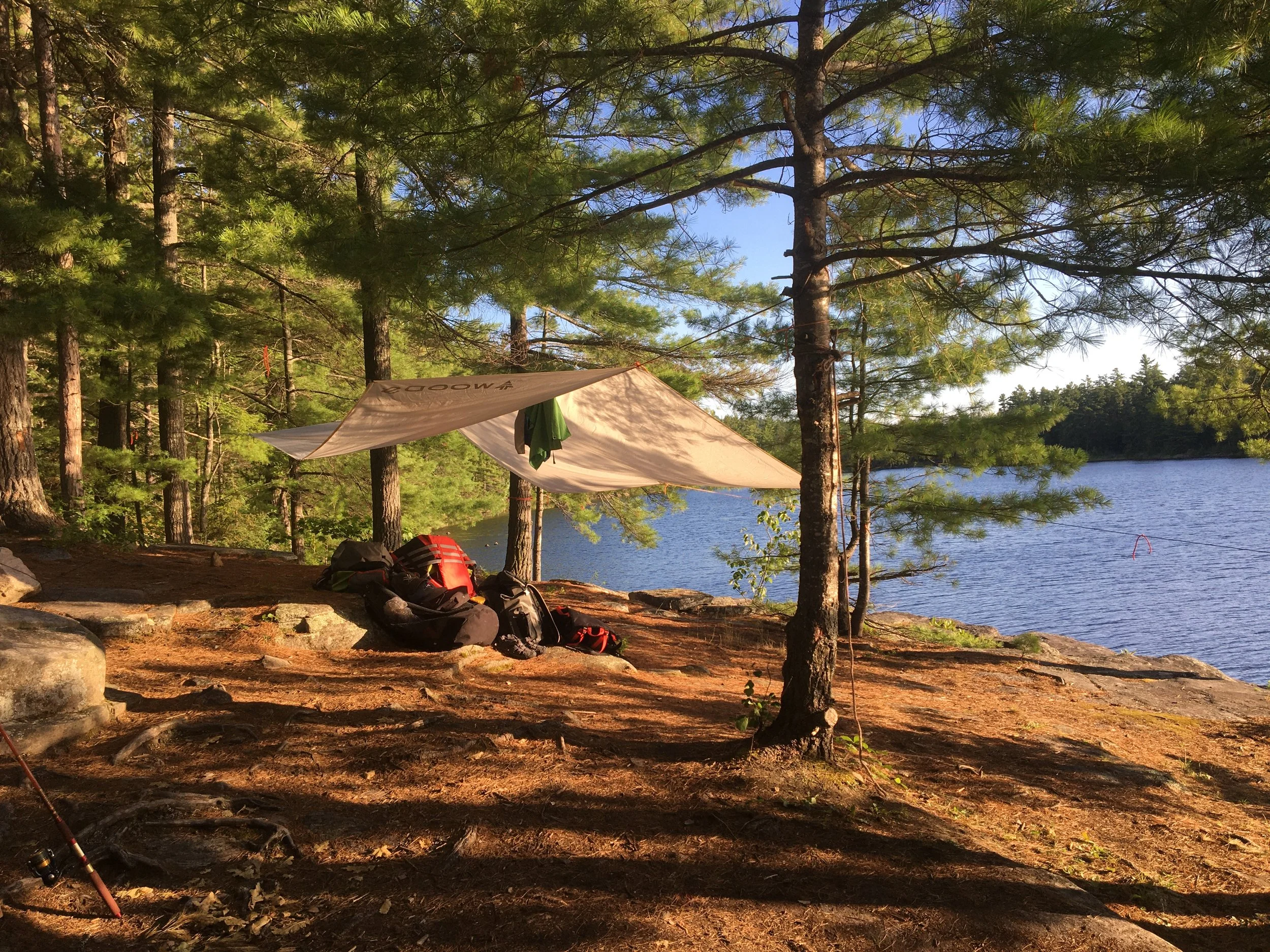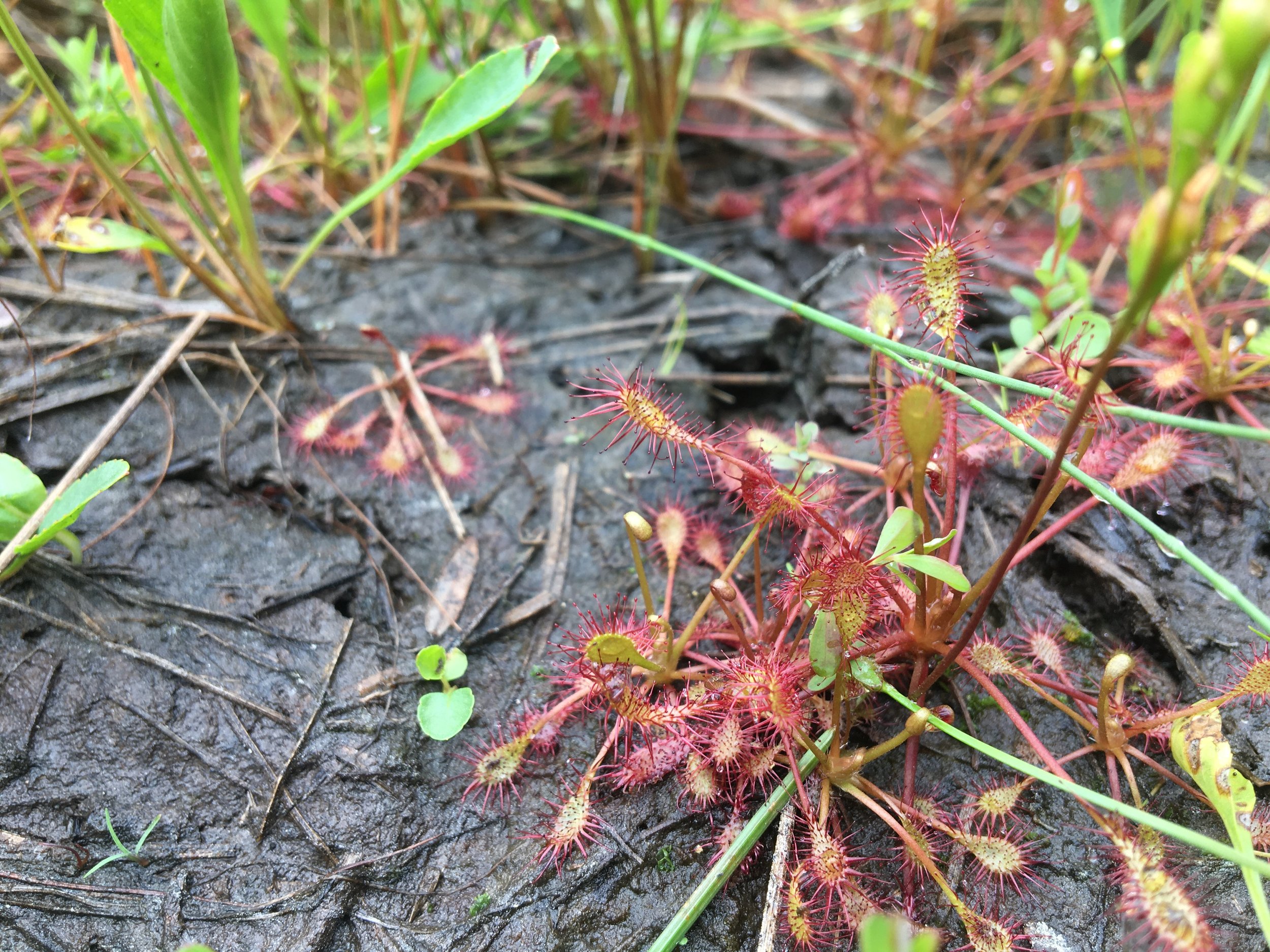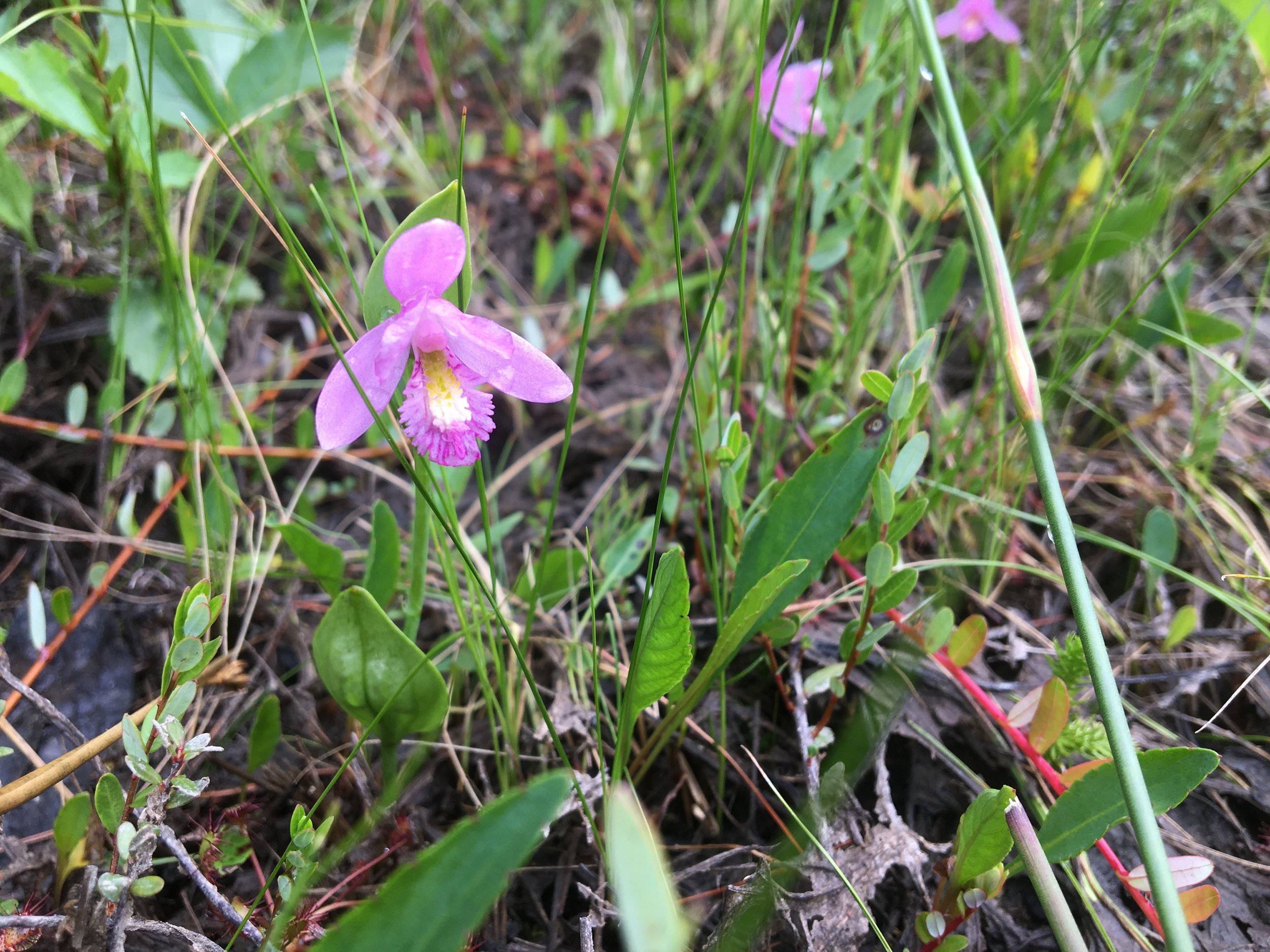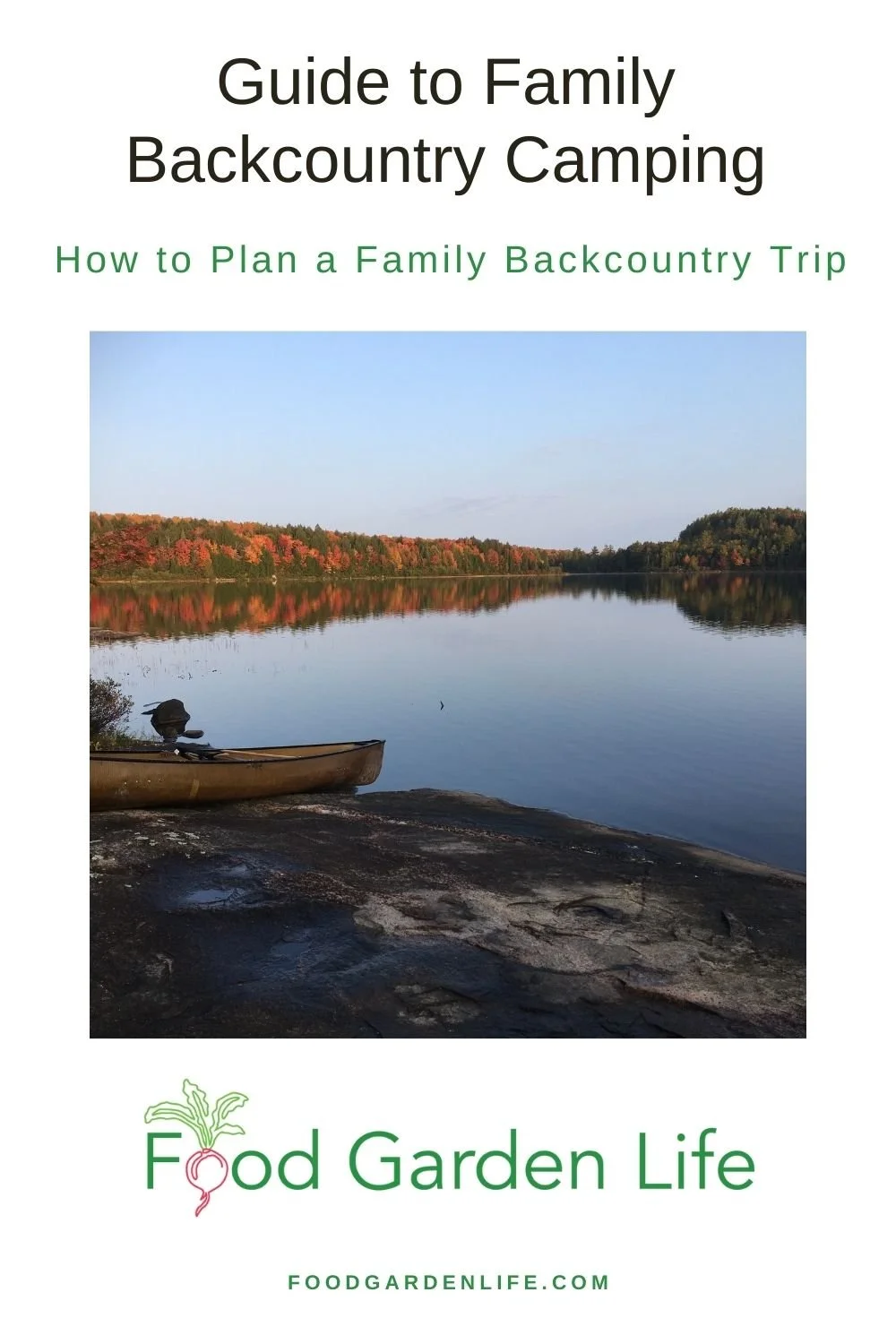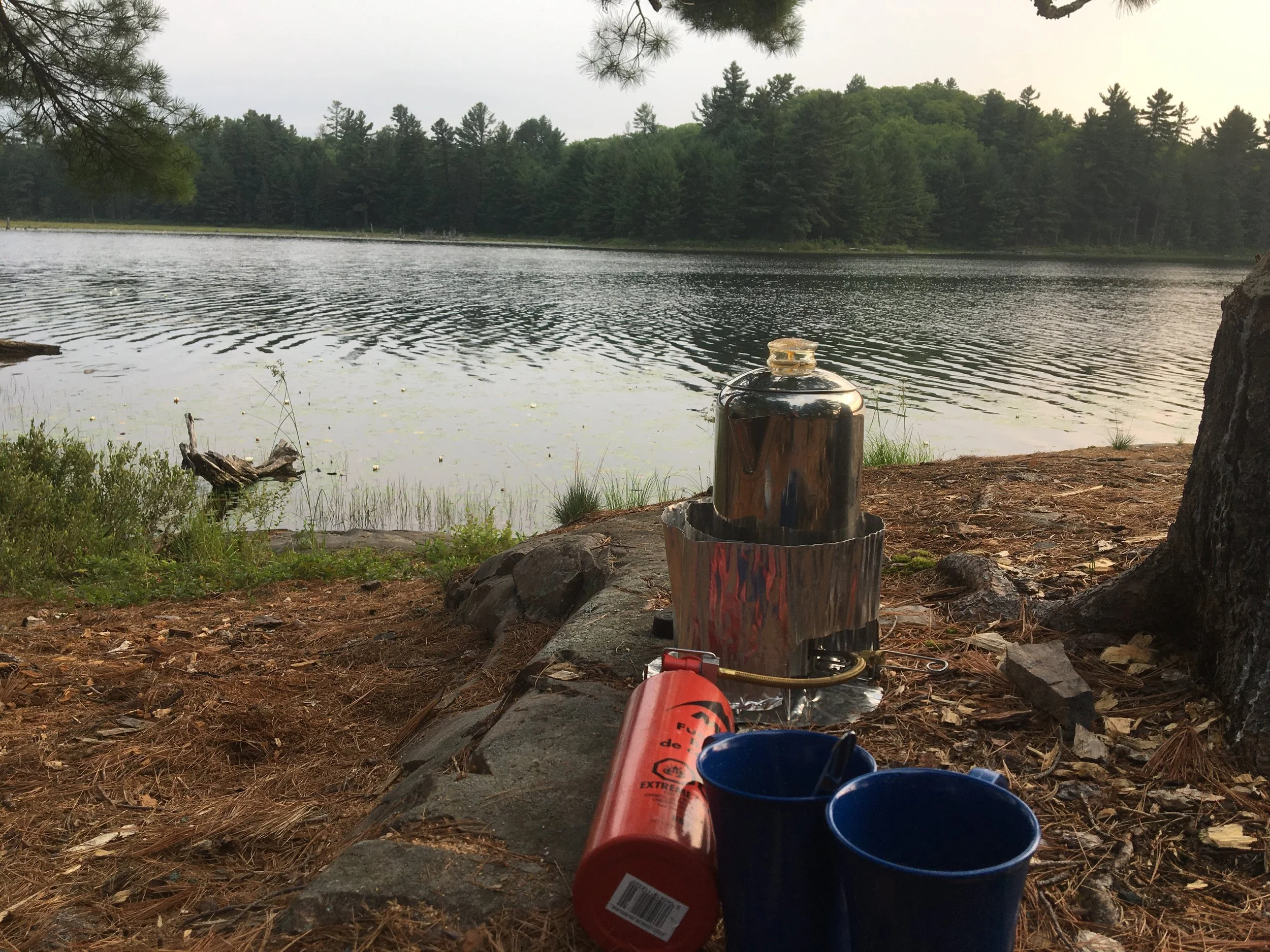Guide to Family Backcountry Camping
We camp as a family, at backcountry sites accessible only by canoe.
By Steven Biggs
Baby Steps to Backcountry Camping with Family
“Crayfish and going on rocks is our favourite thing in the world.” With that sort of endorsement, my wife Shelley and I knew family camping trips were a hit with our three young children.
We have had unexpected hiccups...
One time Quinn said to us, “Dad, I think there’s something in the van.” We’d left the van doors open as we prepared our meal, and a raccoon took the opportunity to rummage through our food packs. Yes, we learned our lesson.
Then there was the time the boys removed their shoes at a portage to chase frogs through the mud…and we were on the next lake before we remembered the shoes.
For our first few years of family camping we went to drive-in campsites. We’d rent a canoe for day trips and go for hikes. We prefer hikes and time on the water to busy beaches and cramped campsites, so we shifted to backcountry camping sites accessible only by canoe.
We have three teenagers now. And it’s a hoot with five of us squeezed into a tent at night. Catching any mosquitoes that make it into the tent, telling jokes, maybe a card game, and jockeying for as much space as possible.
Here’s how things typically unfold when we arrive at a site:
Keaton and Quinn getting the mattresses and sleeping bags set up.
Keaton gets ropes in place to hang the food barrel
Quinn lines up firewood for the first night
Emma and my wife Shelley set up the tent
I hang a tarp to create a covered area, and then set up my kitchen
Then it’s time to swim, eat, and fish!
Plan Your First Family Backcountry Camping Trip
Good planning is the ticket to make your backcountry trip a success. There’s no hopping in the car to get gear or food that you forgot. So double check your list before you head out! (See the packing list below.)
Packing for a backcountry trip is a balancing act: Pack everything you might need, but also pack lightly…because you’ll be hauling it.
Backcountry Light: Camp Backcountry Without Portages
The kids and I celebrate the end of school with an annual camping trip.
If you want to move beyond car camping, but are not ready to tackle portages, look for campsites with canoe-only access that don’t require portaging – campsite on the same lake as the access point.
The kids and I celebrate the end of school with an annual camping trip. It’s a trip for relaxing, so I often pick canoe-in campsites that don’t require portaging. That way we can pack extra gear such as a folding table and chairs, knowing that we don’t have to portage it.
(We enjoy Algonquin Park here in Ontario, and examples of lakes with canoe-access sites that don’t require portaging are Rain, Kingscote, and Sec Lakes.)
Pick the Right Route for Your Family
With 3 teenagers, I don’t have to carry as much gear as I used to.
We go backcountry by canoe (there are also backcountry sites accessible by hiking trails.) So we carry canoes and gear from lake to lake along portages. Some portages are short, maybe just a few metres around a beaver dam. Others not so short.
The kids are all teenagers now, so the work at portages is spread out between us (and it gets more and more equal every year!) This past summer we tackled a 2900 metre portage. We packed lightly and were able to carry everything in a single trip. But when they were smaller, I avoided long portages.
When picking a route, I look at official park maps (we camp at Ontario provincial parks), which show canoe routes and portage lengths. Then I look for other maps, online comments and trip logs that give me an idea what a route is like.
Pack for Portaging
Quinn portaging a canoe. If you’re renting a canoe for the first time, ask about weight and stability. Weight matters at portages.
I remember backcountry trips when I was a poorly equipped and not-so-savvy student. We carried in two-burner camp stoves and bags of fresh produce and meat. It was heavy and bulky. There was no way we could manage a single trip at portages.
There’s a whole world of light gear designed for the back country. Everything from tents, tarps, kitchen and cookware, and sleeping bags. It can get expensive re-equipping yourself if you already have a lot of gear for car camping. We’ve taken a gradual approach and each year get some new light-weight gear. This year it was quick-dry lightweight towels.
Outfitters rent many of the things you need, so there’s no need to buy everything at once.
If you have a lot of heavy gear and are not ready to upgrade, then select your route accordingly, with fewer and shorter portages.
Top Tip When Camping with Kids
A cold kid is a grumpy kid. It’s hard to stay warm when you’re wet. My kids regularly got soakers as they explored the shoreline and looked for snakes and frogs. So the one area where I don’t pack lightly is extra dry clothes and footwear for the kids.
Tips for Kid Safety in the Backcountry
Whistles. When our kids were small we had them wear whistles in case they got separated from us.
Cutting wood. I don’t take an axe back-country with kids. I think teaching kids axe safety is a great idea, but I don’t think back-country is the place to practice. I use a folding saw instead.
Water shoes. Water shoes are a good way to prevent cuts and scrapes. Clam shells can cause big gashes…we know from experience.
Life jackets when swimming. Depending on the age of your kids and their level of swimming, consider having them use life jackets when swimming
Things to Do with Kids Backcountry
Fish (even if you don’t want to cook fish, catch-and-release can be thrilling for kids)
Swim (Keaton loves exploring underwater and looking for fish and shells)
Hunt for crayfish
Watch for birds (on a recent trip we were treated to pileated woodpeckers – the big ones – hanging out at our campsite, and on another trip we watched a seagull dive-bombing a bald eagle)
Day trip to a portage for a hike
Picnic at another campsite
We also take a portable bocce ball set, cribbage board, a deck of cards, and a small foam football.
Make a Covered Area
Use a tarp to create a covered area at your campsite
We hang a tarp to make a covered area where we stow empty packs (no need to have them clutter up the tent, it’s already small enough.) And it doubles as a covered space if it rains. I can cook under it, and we’ll eat there if needed.
Leave no Trace
Teach your kids to clean up the site when you leave. We’ve arrived at sites where previous campers must have watched too many reality TV survival shows and had hacked down all sorts of trees near the campsite in an attempt to make furniture. Too bad…it takes years to grow back.
Canoe Skills
If you have not canoed before, learn basic canoe skills and safety before taking your kids out on the water. Find a group that provides training in your region. For example, here in Ontario, the Ontario Recreational Canoeing And Kayaking Association has a list of classes.
Renting a Canoe
If you’re renting a canoe for the first time, ask about weight and stability. Weight matters at portages. But if you’re only going across a lake, it doesn’t, and a less expensive, heavier canoe is fine.
Renting canoes is also a good way to test out canoes before buying your own. Over the years we decided we really liked a certain model of canoe. So I bought a couple of them from an outfitter who was selling off used canoes at the end of the season. (There’s no need for pristine canoes when we’re trekking with kids!)
Bear Safety and Hanging Food
Keaton and I hang the food barrel between two trees.
We camp in black-bear country. There’s nothing to fear, but take bear avoidance seriously. We’ve seen bears at a distance while hiking. But have never had one in our campsite.
3 Tips to Avoid Attracting Bears
We keep our food in a food barrel, which we hang above the ground when we’re not using it
We burn food scraps and garbage with food odours in the campfire
No foods or scented items (e.g. cosmetics, candy, gum) in the tent. Ever.
I hang the food barrel between two trees. Here’s what I’ve found is easiest:
Pick a couple of trees that are upwards of 30 metres apart
I use two ropes
I throw a rope over a high branch on each of the trees (tie a rock to the end of the rope so it’s easier to throw it upwards)
When the ropes are in place, I tie off one end at the base of the tree, and then I connect the two ropes in between the two trees using a small metal pulley attached to the end of one of the ropes (you’ll find pulleys at any hardware store)
When it’s time to hoist up the food barrel, we clip the barrel to the rope with carabiners
Then we pull tight on the rope that goes through the pulley, until the barrel is high off the ground
Then we tie off the rope on a tree.
Packing List for Family Backcountry Camping
Not sure what to bring on a backcountry camping trip? I have a spreadsheet with my must-have backcountry camping gear. Why recreate the wheel every time we camp! Use the items below to make your own list.
For the Canoe Travel
We keep our map, along with phones, wallets, and keys in a sealable waterproof pouch that’s attached to the canoe.
Take extra rope. It’s useful to secure tarps, dry clothes, or tie canoes.
Waterproof bags (dry bags) and knapsacks
Sunglasses
Water bottle
Snacks for kids
Map
Insect repellent
Camping permit
Fishing licence
Shelter
Tent and tent pegs
Ground sheet to go under the tent
Sleeping bag
Sleeping bag liners (useful in the shoulder seasons when there might be an unexpectedly cool night)
Sleeping pads
Camping pillows
Campsite Stuff
Headlamps, lanterns, flashlights
Tarp
Rope for hanging your food, hanging tarps, and a clothesline…and extra rope, just in case
Saw for cutting firewood (see below: I do not take an axe or hatchet backcountry)
Your Camp Kitchen
This is a backcountry site with a nice fire pit, and chairs and tables the previous campers have made out of rocks.
Some of the parks we’ve stayed at have picnic tables at backcountry sites. Many don’t. We always find fire grates at the sites we go to, so I never bring one. But nonetheless, all my meals are planned to be cooked on our stove.
Water purification tables or reverse osmosis water filter
Stove and fuel (I use a small single-burner stove)
Matches, lighter
Utensils for eating and cooking
Filleting knife if you’re fishing
Plates, bowls, cups, mugs, cutlery (plastic sporks are light)
Cookware (If you want something compact, look for sets of pots that nest one within another)
Pot grabber
Collapsible basin for washing dishes (don’t wash dishes in the lake!)
Biodegradable dish soap
Cutting board if you might fillet a fish
Vessel or jug for treated water
Wash cloth and dish towel
Garbage bags
Optional Stuff for the Perfectionist
Small broom and dustpan for the tent
Things to Keep Everyone Busy
Fishing gear
Swimming goggles
Notebook and pen
Camera
Binoculars
Field guides (flowers, insects)
Books
Play stuff (cards, ball, games)
Clothing
We wear synthetic moisture-wicking fabrics because cotton takes a long time to dry out if it gets wet. Take extra clothing when camping with kids. I take two sets for myself and wash the set I’m not wearing…but I take multiple sets for the kids. Even when the weather is warm, you might want to pack long-sleeve shirts for bugs and sun protection on the water.
Underclothes
Shirts (long and short sleeve)
Pants and shorts
Sweater
Hat
Rain gear
Boots or shoes that are good for rough terrain
Close-toed waterproof footwear for getting in and out of canoe
Water shoes
Sleepwear for those who get cold at night
Swimwear
Personal Care
Toilet paper
Toothbrush and toothpaste
Hand sanitizer
First-aid supplies
Sunscreen
Sunglasses
Insect repellent
Glasses (on a recent trip I brought a book I was eager to read…and forgot my reading glasses)
For the Unplanned
First aid kit
Duct tape*
Fire starter (good to have on hand in wet weather when there is less dry material for starting fires.)
A second set of waterproof matches
Extra batteries
*If you’re wondering about the duct tape, it’s a quick and easy way to patch a canoe. It’s also useful when your tent poles break. I was backcountry with the kids once when one of a fibreglass tent pole split lengthwise. Duct tape saved us.
Glamping Checklist
The coffee percolator.
On our trips we’ve met some amazing campers with top-notch gear that they pack lightly and efficiently. I really admire that. But our family trips are not marathons, so we often pack a couple of heavier items.
Hammock (OK, confession, on the last trip we had 4 hammocks because everyone argues over them!)
Camp stools (Because I’m the one cooking and spending a lot of time at the stove, I pack myself a small folding stool. Some sites have great benches or chairs that people have made from rocks…others don’t)
Camp table (if no picnic table)
Coffee percolator (I’m fine with instant coffee when I camp, but my wife Shelley really enjoys perked coffee, so when she’s on a trip with us the percolator comes along too.)

